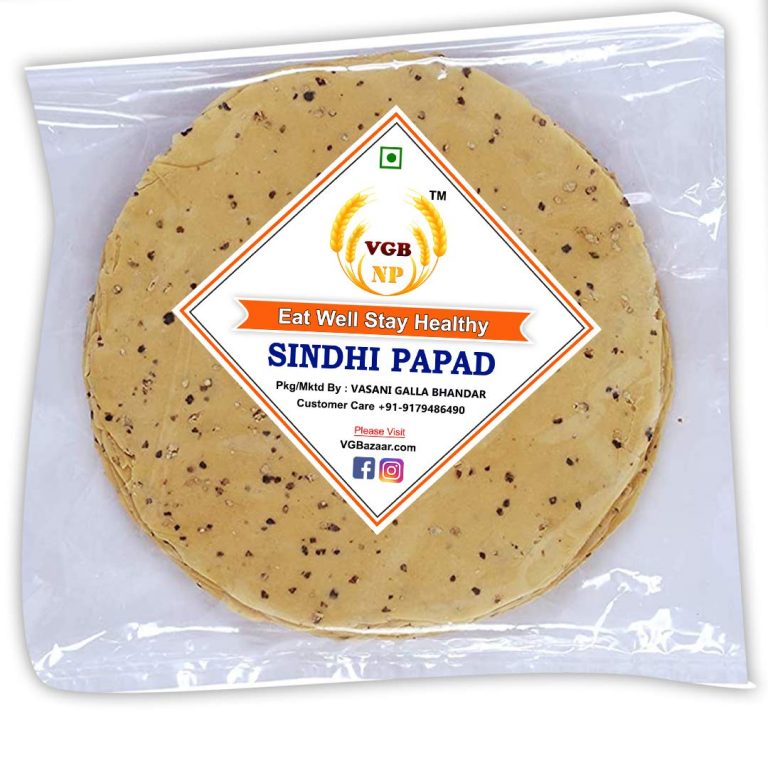
Sindhi women creatively found ways to make money from their skills and labor that was often focused in the domestic sphere.
By Pooja Makhijani
y parents grew up in India, and were often taunted with papad پاپڙ jokes – “Sindhi Papads!” They were called. Displaced from Sindh, in modern-day Pakistan, after the partition of British India in 1947, Hindu Sindhis – my community -have long been associated with these crispy, spiced flatbreads (commonly known as papadam and appalam in other South Asian languages—but these are not the same).
Sindhi papad is similar to other North Indian papad in that it is lentil flour–based, but incorporates both husked black beans (urad dal) and green gram (moong dal), according to Sapna Ajwani, founder of Sindhi Gusto, a London-based pop-up restaurant that specializes in Sindhi cuisine. “Sindhi papad is seasoned with copious amounts of ground cumin, black pepper, and dill seeds,” she said, and usually roasted over an open flame. “[It’s] almost always artisanal and handmade,” Ajwani stressed, and told me she helped her mother make them as a child. She decried the industrial-made versions, especially those marketed as “Sindhi,” which are usually made only with husked black beans and profuse quantities of black pepper. “It tastes horrid!”
Papad is cooked over a medium-high flame. As a child, I learned to use tongs to flip the papad frequently until “it [turned] from smooth translucence to blistery opacity,” as Niloufer Ichaporia King describes in her cookbook, My Bombay Kitchen. “Little dark spots are all right; huge burnt ones are not. Neither are unblistered, raw patches.” The ability to perfectly prepare papad was a prerequisite for marriage, my grandmothers told me. I rolled my eyes.
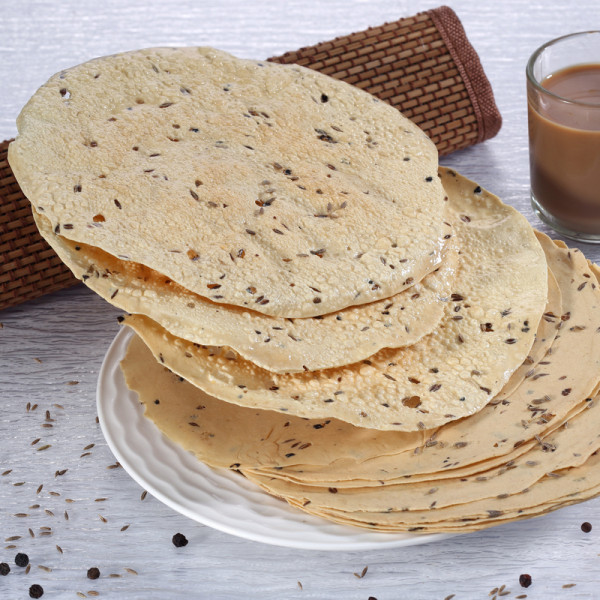 It is customary to welcome visitors to a Sindhi home with papad and water, and I remember setting out a plate of papad alongside cocktail samosas and mini kababs at family gatherings. Similarly, the humble papad has a starring role in Sindhi weddings; I’ve attended celebrations at which the bride’s family welcomes the groom’s procession into her home with cold sharbat and hot papads.
It is customary to welcome visitors to a Sindhi home with papad and water, and I remember setting out a plate of papad alongside cocktail samosas and mini kababs at family gatherings. Similarly, the humble papad has a starring role in Sindhi weddings; I’ve attended celebrations at which the bride’s family welcomes the groom’s procession into her home with cold sharbat and hot papads.
More interestingly, and perhaps more revelatory to the food’s association with this small transplanted community, papad has played an integral role in the history of the Sindhi diaspora in India and beyond. Many Hindu Sindhis, who lost nearly all of their wealth and property when they left Sindh after Partition turned to entrepreneurial efforts to re-establish an economic base. “Women creatively [found] ways to make money from their skills and labor, that was often focused in the domestic sphere,” said Steven Ramey, associate professor in the Department of Religious Studies at the University of Alabama, and author of Hindu, Sufi or Sikh: Contested Practices and Identifications of Sindhi Hindus in India and Beyond.
In Ramey’s book, a Partition refugee recalls seeing women rolling and drying papads in Lucknow, spreading them out on a charpoy, in the old city where Sindhi families settled in apartments that had been previously occupied by Muslims who had migrated to Pakistan.
Eventually, Sindhi communities began to make papad as part large-scale food manufacturing enterprises. Ulhasnagar, a city about 35 miles east of Mumbai, which was founded as a military camp during World War II and whose barracks became home to nearly 100,000 Sindhi migrants, is today the epicenter of a multi-million dollar Sindhi papad–making industry. Sindhis of the global diaspora, including my family, still flock to Ulhasnagar to buy choice papads from provision stores that have been in the same location for generations.
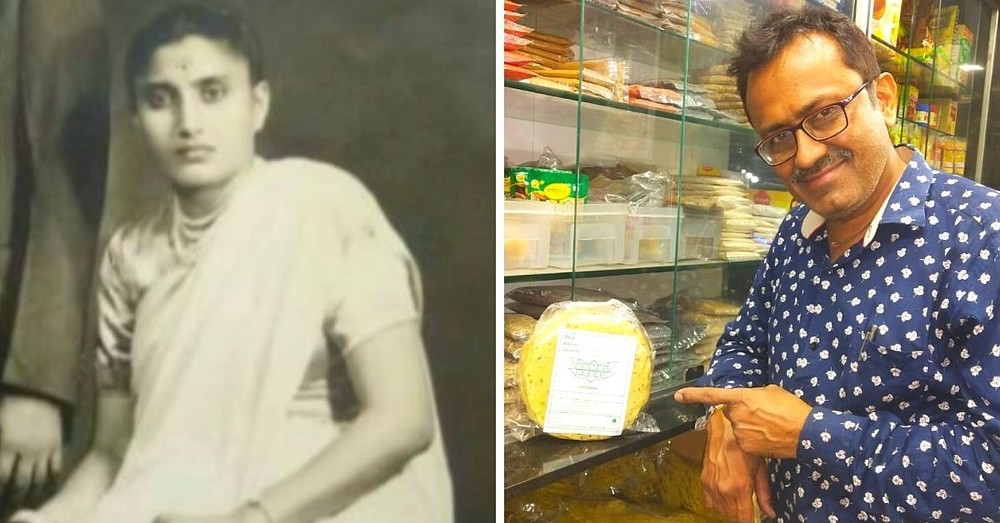 The Sindhi diaspora is vast; I have extended family India, Hong Kong, Singapore and the U.S. Virgin Islands. Hindu Sindhis migrated from Sindh in two waves: in 1843, when the British crown annexed the province and a group of merchants from Hyderabad, Sindh (“Sindworkis”) struck out in search of business in countries as far away as Panama and the Straits Settlements (present day Singapore and peninsular Malaysia), and again in 1947, as a result of the political and social strife that accompanied Partition.
The Sindhi diaspora is vast; I have extended family India, Hong Kong, Singapore and the U.S. Virgin Islands. Hindu Sindhis migrated from Sindh in two waves: in 1843, when the British crown annexed the province and a group of merchants from Hyderabad, Sindh (“Sindworkis”) struck out in search of business in countries as far away as Panama and the Straits Settlements (present day Singapore and peninsular Malaysia), and again in 1947, as a result of the political and social strife that accompanied Partition.
Hindu Sindhis fled Pakistan en masse, either across the border to India or to locations where they already had business interests, as established by Sindworkis.
My parents participated in a second scattering, as part of the so-called “Indian diaspora”; they immigrated to the United States after the passage of the Immigration and Nationality Act of 1965, which flung open the proverbial door to millions of fortune-seekers from India, and Asia more generally.
While Hindu Sindhis are allegiant to their ancestral foods, as many exiled communities are, what is particularly striking is how our foods’ social meaning and symbolic significance are so similar across the global Sindhi community. I have Sindhi friends who have grown up on nearly every continent—from Chile to Jamaica, from Dubai to Thailand, from Gibraltar to South Africa — yet our culinary memories and practices are nearly identical. Growing up, our breakfasts consisted of daal pakwaan, thick split-chickpea stew and flaky deep-fried flatbread, or sayun patata, sweetened vermicelli with pan-fried potatoes; for Sunday lunch, Sindhi kadhi, a chickpea flour–based vegetable curry, or mirch pakoda, bell pepper fritters soaked in tamarind chutney. These dishes were decidedly “traditional” and untouched by the global culinary influences of these new lands.
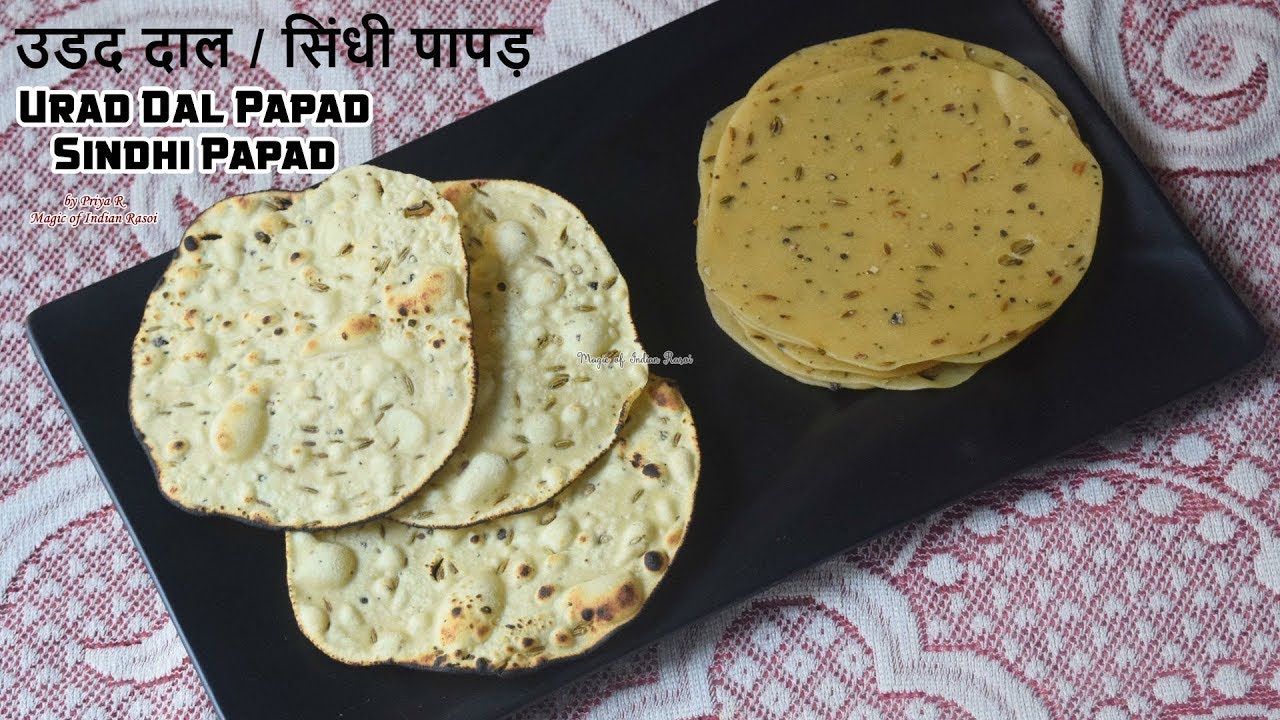 It’s often difficult to explain to outsiders how tight-knit (to the point of being insular) and transnational Sindhi networks are, which probably lends itself to this cultural uniformity. My grandmother received a directory annually: a thick, compact book that contained generations of information about Sindhi families around the world. She turned its pages, drew lines from our family to others’, in places like Malaga, Spain or Nairobi, Kenya, or Jakarta, Indonesia, making connections through long-distance marriages, visiting, and pilgrimage. Marriage outside “the community” is still rare; many of my peers married within the Sindhi diaspora, whether through traditional arrangements or Sindhi marriage websites or youth conferences.
It’s often difficult to explain to outsiders how tight-knit (to the point of being insular) and transnational Sindhi networks are, which probably lends itself to this cultural uniformity. My grandmother received a directory annually: a thick, compact book that contained generations of information about Sindhi families around the world. She turned its pages, drew lines from our family to others’, in places like Malaga, Spain or Nairobi, Kenya, or Jakarta, Indonesia, making connections through long-distance marriages, visiting, and pilgrimage. Marriage outside “the community” is still rare; many of my peers married within the Sindhi diaspora, whether through traditional arrangements or Sindhi marriage websites or youth conferences.
Mark-Anthony Falzon, an associate professor of sociology at the University of Malta and author of Cosmopolitan Connections: The Sindhi Diaspora, 1860-2000, attributes this common Sindhi diasporic experience to intentional discourses of multiple colonization and dispersals that crystallized a notion of post-Partition Sindhayat, or “Sindhiness.” Religious and cultural practices were intentionally codified by community leaders to serve as a vital connection to the land that, as refugees, they could not return to.
Sindhi food is distinct, and its most peculiar dishes are unavailable outside home kitchens: loli, spiced whole wheat flatbread with a pie crust-like texture; bhee patata, lotus stem and potato curry; sayel maani, day-old chapattis cooked in a tomato and onion curry seasoned with garlic and black mustard seeds.
Papad has a unique place within the context these meals. In my home, papad is served at the end of a meal and washed down with a glass of water. Both my grandmothers regaled me with tales of warning about how I’d be struck with a nasty cough if I didn’t consume water and papad in this sequence. In other homes, papad is served an appetizer. Sandhya Nankani, a children’s media producer who grew up in Morocco, Ghana, and India, and now lives in northern New Jersey, recalled her grandfather munching on papad, accompanied by a glass of Johnnie Walker whiskey, on his verandah in Accra before dinner. Reema Keswani, a Brooklyn-based jewelry designer and gemologist, who grew up in Taipei City, Taiwan, shared a similar story. “Papad, paired with Johnnie Walker whiskey, signaled the start of a long, leisurely dinner,” she said. (My people love their Johnny Walker Black, what can I say?)
Papad is so integral to Sindhi cuisine, that families often have very specific means of procurement. While my family flocked to Ulhasnagar, Nankani said that papad wasn’t available in Africa at the time she lived there, and relatives who traveled to and from India would replenish her family’s supply. “It was a coveted thing!” Nankani said. Later, in Pune, India, her grandmother would buy papad dough from a trusted seller in town, and dry the papad on sheets of newspaper on her balcony. The dough was rolled paper-thin, and the disks were usually laid out to dry in the direct sun for two to three days. This culinary treasure was stored in round Royal Dansk Danish Butter Cookie tins, the perfect size and shape for papad.
Raakhee Mirchandani-Singh, Editor-in-Chief of moneyish.com and a parenting contributor at Elle.com, like me, grew up in the United States and now lives in New Jersey, but to parents born in Suriname and the Philippines. Her family had a maker in Mumbai who dried papad on the top of a city high-rise, and when a family member visited the Indian city, her parents negotiated with him or her as to how much “weight to allot to papad,” she said. “It sounds ridiculous—this wheeling and dealing over weight—but we had our person who we needed papad from!” (An aside: “-ani” is a common Sindhi surname suffix, in case you were wondering.)
Papad is nearly always paired with sweet, homemade yogurt on our table; my family members either use pieces of papad to scoop heaping dollops of yogurt into their mouths, or crush papad into bowls of yogurt, creating a sweet-and-spicy, smooth-and-crunchy pudding-like close to their meal. It is, to outsiders, an unusual way to consume these universally popular flatbreads, and I have yet to uncover any other South Asian cultures who eat papad in this way. When I described this “dish” to Sindhi friends, they nodded in recognition: Mirchandani-Singh said her grandmother ate papad in this way; “Too soggy for me,” she added.
I have some anxiety of the preservation of this food culture: the survivors of war and decolonization and migration and refugee life are often tasked with holding on. I hold stories—of a great-grandfather who narrowly escaped pogroms in Karachi, Sindh; of a great-great aunt who rationed the handful of gold coins wrapped in the ends of her sari to pay for the privilege to use a railway station bathroom; of grandparents who lived in squalor in refugee camps in towns and villages where there presence was considered an unwanted burden.
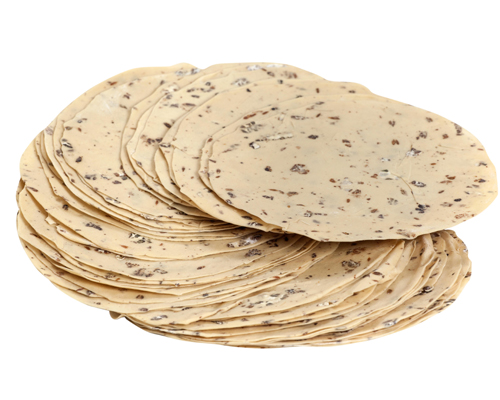 And so I wonder: what will happen after the grandmothers who love to dispense papad-related marital advice and the grandfathers who are bereft without their Johnny Walker—those whose traumas facilitated the tight grip on these culinary traditions—pass? Am I doing my ancestors a disservice by making substitutions—kale for spinach in sai bhaji, or kohlrabi for potato in “aloo” tuk, twice-fried potatoes seasoned with red chili and mango powder?
And so I wonder: what will happen after the grandmothers who love to dispense papad-related marital advice and the grandfathers who are bereft without their Johnny Walker—those whose traumas facilitated the tight grip on these culinary traditions—pass? Am I doing my ancestors a disservice by making substitutions—kale for spinach in sai bhaji, or kohlrabi for potato in “aloo” tuk, twice-fried potatoes seasoned with red chili and mango powder?
My great-aunt lives in Chembur, a Mumbai suburb where the new Indian government settled many Sindhis in refugee camps in the aftermath of Partition, and where this branch of the family has lived since 1947. She recently visited us in New Jersey. In her hostess parcel was Sindhi papad from I rip open the packet, slowly roast one on the stove and crumble it into a container of Greek yogurt I have on hand. When papad isn’t available to my parents at home, they resort to Lay’s Potato Chips or tortilla chips to satisfy the crunch so needed in and so familiar to, their Sindhi meals. My father, especially, is a fan of crushing the latter into his end-of-meal bowl of yogurt. The Costco brand corn tortilla chips that he loves don’t have the spiciness of papad, but he still craves their texture and savoriness; this hankering for familiar textures seems to be coded into his DNA. Maybe it is in mine as well.
_______________________
Courtesy: Food52